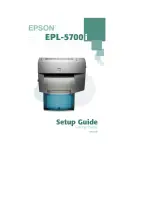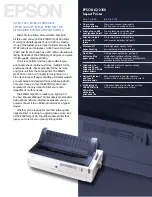
PROGRAMMER’S REFERENCE MANUAL
Label layout definition commands
Page 12
The date symbols can be defined with an offset for best-before dates. The offset value is
inserted between the ‘%’ character and the date symbol. The offset value can be either in days
or in months:
Best-before date
Today’s date in the examples below is assumed to be the 31 of January 1998 if nothing
else is specified.
Input
Output
%d10D/%d10N/%d10y
10/02/1998 (ten days best-before date)
%m1y-%m1N
1998-02 (one month best-before date)
The offset value may be a variable. If variable one is 30 and variable two is 12, then the
following examples will give the result:
Input
Output
%d%1VD/%d%1VN/%d%1Vy
02/03/1998 (30 days best-before date)
%m%2Vy-%m%2VN
1999-01 (12 months best-before date)
It is possible to use the same best-before date even if the actual date changes and only
update it on a monthly basis. This is accomplished by the use of parameter 185, which
specifies what day in the month to update the best-before date. The syntax of the label data
does not need to be changed. See the following example where parameter 185 is set to ‘15’:
Input
Output
%d10D/%d10N/%d10y
25/01/1998 (i.e. calculated from the 15
th
of
January even though today’s date is 31
st
of
January)
When today’s date reaches the 15
th
of February the output would be 25/02/1998, until 15
th
of Mars where it would be 25/03/1998 and so on.
Another feature that can be automated is month truncation. If the calculated best-before
date exceeds a certain day in the calculated month, the resulting best-before date will be
rounded to the first of next month. The truncation day is specified by setting parameter 186.
See the following example where parameter 186 is set to ‘20’:
Input
Output
%d10D/%d10N/%d10y 01/02/1998
Note! Earlier versions of Labelpoint did not support best-before dates, week numbers,
julian date, week day. Some programs, like Viewpoint, used a similar syntax internally,
which was converted to static text before sent to the printer.
















































